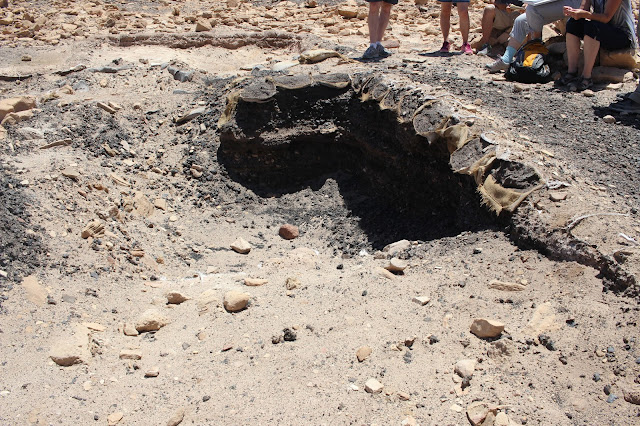Israel 2016, Days 12 & 13
Since we have a decent wi-fi signal, I can get caught up. So, I'm going to combine the previous two days into one posting.
Day 12
We spent the day in The Negev, an arid area south of Jerusalem, shaped somewhat like an hourglass with Be'er Sheva in the middle.
Be'er Sheva was our first stop. In this region, water rights were everything and always in dispute. In Gen 21, Abraham and Abimilech (a title more than a name, similar to "Pharaoh") negotiate for the water rights and name the location Be'er Sheva. (Beersheba). It shows up in 1 Sam 18 and Judges 15:30-31.
Be'er Sheva was our first stop. In this region, water rights were everything and always in dispute. In Gen 21, Abraham and Abimilech (a title more than a name, similar to "Pharaoh") negotiate for the water rights and name the location Be'er Sheva. (Beersheba). It shows up in 1 Sam 18 and Judges 15:30-31.
 |
| The surrounding area is dry but not a desert. |
 |
| The ancient city was large and sophisticated for its time. |
 |
| This is a very large cistern, designed to hold water for those times of no rain. Many of the ancient cities had surprisingly sophisticated water systems. |
 |
| This is a bench at the gates of the city. This is where the elders of the city would sit and adjudicate issues among the people. "Elders at the gate." |
Arad, on the northeast side of the Negev was next. There was an upper and lower city. The upper city was newer, built in the Byzantine Ear. The lower city was built by David. Arad shows up frequently in the Old Testament (Num 21-33, Josh 12, Judges 16 and a few other places)
The upper city was a strong fortress.
The lower city, built by David was large.
Advat, far to the south, was a highly prosperous city due to the spice traders that traveled through it on their way to Gaza, a port city on the Mediterranean.
The upper city was a strong fortress.
The lower city, built by David was large.
Advat, far to the south, was a highly prosperous city due to the spice traders that traveled through it on their way to Gaza, a port city on the Mediterranean.
































No comments:
Post a Comment